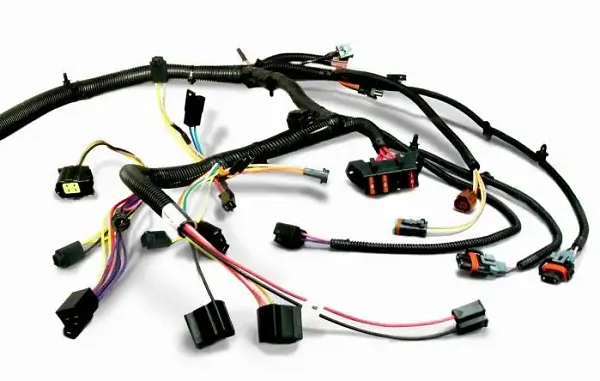Cable connectors play a crucial role in automobile safety systems by ensuring the proper functioning of various safety features. With advancements in automotive technology and increasing safety requirements, the design and application of cable connectors have also evolved.
Here is an overview of the main applications of cable connectors in automobile safety systems and their importance.
Airbag Systems
Application Overview
- Airbag Connection: Cable connectors link airbag sensors, airbag modules, and control units to ensure that airbags deploy promptly in the event of a collision to protect occupants.
Importance
- High Reliability: Airbag systems require connectors to quickly and reliably transmit signals at critical moments to ensure effective airbag deployment.
- Heat and Vibration Resistance: The airbag system operates in a complex environment, so connectors must withstand high temperatures and vibrations to ensure system functionality under various conditions.

Anti-lock Braking System (ABS)
Application Overview
- Sensor Connection: Cable connectors connect ABS sensors, control modules, and actuators to monitor wheel speeds in real-time and prevent wheel lock-up.
Importance
- Signal Stability: ABS systems need precise signal transmission to adjust brake pressure in real-time; connectors must ensure stable and interference-free signals.
- Durability: Connectors must be wear-resistant and corrosion-resistant to handle the braking system’s working environment.
Electronic Stability Program (ESP)
Application Overview
- Control Unit Connection: Cable connectors link ESP sensors, control units, and actuators to help maintain vehicle stability during driving and prevent skidding or loss of control.
Importance
- Rapid Response: ESP systems require real-time data reception and processing; connectors must support high-frequency data transmission.
- Environmental Adaptability: Connectors need to withstand various driving conditions, including high temperatures, low temperatures, and moisture.
Lane Keeping Assist System
Application Overview
- Sensor and Control Unit Connection: Cable connectors link lane departure warning sensors and control systems to help keep the vehicle centered in its lane and reduce unintended lane departures.
Importance
- High Precision: The system needs accurate data to determine lane position; connectors must ensure high-precision data transmission.
- Interference Resistance: Connectors must have good electromagnetic interference resistance to ensure stable system operation.
Automatic Emergency Braking System
Application Overview
- Sensor and Actuator Connection: Cable connectors link collision sensors, braking system control units, and actuators to automatically initiate braking when a potential collision is detected.
Importance
- Real-time Performance: The system needs to respond in a very short time; connectors must provide fast and reliable signal transmission.
- Environmental Resilience: Connectors need to handle different environmental conditions within the vehicle, such as high temperatures and vibrations.
Cable connectors in automobile safety systems not only enhance vehicle safety but also significantly improve driving comfort and reliability.
Choosing and using appropriate cable connectors ensures the proper functioning of various safety systems, providing comprehensive protection for drivers and passengers.

